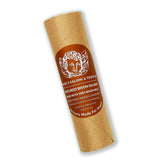How to Slice Salami at Home
Some say the mark of a great salami is one that can be sliced so thin and with the huge variety of salami hanging In the delicatessen near you, it could seem like a huge undertaking to figure out how to trim and cut each to be sliced to perfection to be then placed on your charcuterie board. Having trained in world-renowned kitchens, we’ve gotten pretty familiar with wielding a blade near cured meats. In this blog, we would like to share our personal tips on how to expertly cut any salami that deserves to be on your next charcuterie board.
A Sharp Knife:
First, let’s start with the chef’s primary tool, the knife. To properly cut salami, you will need a suitably sharp knife and a stable cutting surface. Never use a knife with a dull blade in the kitchen as this can be very hazardous and may cause unwanted, severe accidents. With the sharp knife in your dominant hand, choke up on the handle with your palm over the point where the steel meets the handle and pinch the blade between your finger and thumb. With the salami in the hand opposite, curl your fingers in, with your thumb tucked behind, in a “claw” manner, imagine yourself mimicking a bear’s paw. This is how you will hold the salami, with the blade’s side against your first knuckles so the tips of the fingers are under and out of the way. Begin the cut with a long, fluid back and forth sawing motion with downward pressure, utilizing most of the knife’s blade. Keep in mind the thickness of making your cut and gauge the width as you progress.
Salami Casing:
Most salumi are held together by an exterior casing. Casings can take the form of natural or artificial material. Depending on the casing, you may want to leave it on or peel it off. To peel off the salami casing, guide your knife lengthwise with a shallow cut, find a flap to grip, and the casing can be pulled from the meat. Some casings may stick due to casing thickness or ingredients used, in this case, run your salami under cool, running water or moisten a paper towel and wrap the salami to loosen the bond and then remove effortlessly.

Thickness:
Salami’s true mark of excellence is when it can be sliced very thin. What you want to aim for is to slice your salami to a thickness that shows its translucence. Some experts say depending on the type of salami, you can cut salami anywhere from paper-thin to 1/8 inch, to ¼ inch thick, though it’s agreed that the thinner the slice, the better. In addition, thinner slices can also make a salami seem larger than it looks, especially when presented on a charcuterie board.
Temperature:
Temperature plays a big factor when it comes to slicing salami, especially in conjunction with a sharp knife. If the salami is too warm, you may end up with the fat content smearing and not creating a sharp edge. It is recommended to cut at around a cool temperature of 50ºF. If you need to chill down your meat from room temperature, stick it in the freezer for about 15 minutes.
When to rely on your butcher or the deli counter to slice for you:
Most salami in the market today can be cut in the comfort of your own home kitchen. There may come a time where you’re looking to use some prosciutto or larger format salami, and in this case, a commercial slicer will be your go-to move. Most supermarkets have a deli counter where you can easily request to have slices cut to your desired preference in minutes. If you can't make it, we have a huge variety of pre-sliced options that make it easy to enjoy our products right out of the package.

If you're looking to hone your skills for slicing salami at home, follow these simple guidelines and you will be a pro in no time at all. To order some of our finest all-natural salami and charcuterie, head over to our online store at www.AngelSalumi.com to order yours today.
Some Salami you can cut at home:
Pre-sliced Charcuterie:








